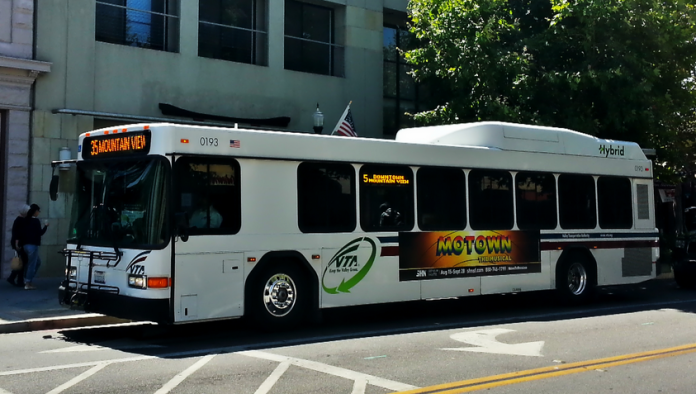Gilroy is set to lose three bus lines, fifty percent of its total coverage area, if a proposed network redesign is approved by the VTA board of directors in April.
“This is why we need local leaders to be more involved in regional issues,” said Gilroy Councilman Dan Harney, who sits on the transit authority’s Policy Advisory Committee.
Harney was also disappointed that only 12 community members attended the public information meeting about the proposed changes in Gilroy last week, and is planning a follow-up meeting with VTA and Morgan Hill officials later this month.
“It doesn’t mean we will get anything but they need to know the impact this will have on our community,” said Harney.
Proposed transit changes in Gilroy include eliminating routes 17, 19 and 14, and replacing them with one new Route 96, which will form a loop and serve many of the stops the three eliminated routes serviced, but not all. Sixty of the network’s 70 routes are set to be modified in some way.
“All the new growth on west side of Santa Teresa, south of 10th street and Glen Loma – none of those areas are covered in the new proposal,” said Harney. “The eastside of Gilroy – the line through Murray Avenue and IOOF will get eliminated. Now riders will have to walk to Leavesley or the Transit Center.”
Last November, less than two weeks after south county voters helped pass Measure B, the 30-year countywide sales tax increase that will collect an estimated $6.5 billion for transportation improvements, including $500 million earmarked for transit operations, the VTA Board of Directors voted to change the focus of its bus service and increase transit service in dense, walkable areas and decrease or discontinue transit service in low-ridership areas to make the network more cost effective and better integrate with BART when it reaches Santa Clara County by the end of this year.
According to VTA, high-ridership routes record 30 to 40 boardings per hour of service and low-ridership routes record as few as 8 boardings per hour. VTA spends about $2 per ride on high-ridership routes and up to $15 per ride on low-ridership routes.
“VTA’s mission is to get people where they need to go while being responsible to the taxpayers who fund us,” said VTA spokesman Stacey Hendler Ross.
One of the network’s lowest performing routes, averaging just seven riders per hour, according to the VTA, is Gilroy’s current Route 17, which serves the city’s eastside, traveling along Railroad, Forest Avenue and Murray Streets on its way to St. Louise Regional Hospital before circling back to the Transit Center.
On weekdays, the route also serves the local social services office and the Compassion Center in Tomkins Court. The new substitute route 96 will not stop in this area.
With its new focus on routes with high ridership versus low ridership, Route 17 was a logical candidate for discontinued service, according to the VTA.
Harney does not see it this way.
“Those that are the most vulnerable won’t be able to get to the Compassion Center or retraining center or social services,” said Harney. “If people need to access social services in San Jose they are required to take three buses and pay each way if they don’t have a pass.”
This, according to the city councilman is an added hardship to those who are already struggling to get by.
Harney is also concerned about VTA’s decision to introduce bus route 185, which runs from the Gilroy transit center to San Antonio and Casey Avenues in Mountain View via the Morgan Hill transit center during the early morning and afternoon commuting hours weekdays.
“It is designed to increase bus coverage in Gilroy but only five people take it,” said Harney. “One of the reasons why people are not taking it is it leaves at exactly the same time as Caltrain. Why would you do that? My concern is they will cut it because of low-ridership, but why would you schedule a bus to compete with the train?”
VTA senior planner, Adam Burger said the proposed changes in Gilroy will mean local riders will have to walk more to get to a bus stop.
“In Gilroy it is very difficult to walk to these bus stops because of a lack of safe pathways and sidewalks, which impacts non-ambulatory and disabled riders in particular,” said Harney, who is also concerned about the impact the changes will make on senior riders.
More than 1,000 comments on the proposed changes have been submitted to VTA. To learn more go to: http://nextnetwork.vta.org/.















